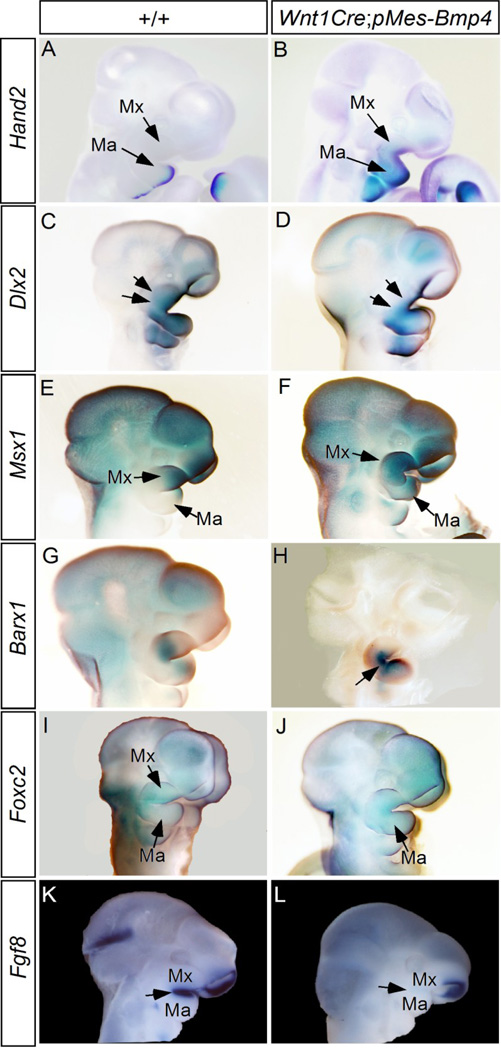Figure 5. Altered expression of maxillo-mandibular landscape genes in E10.5 Wnt1Cre;pMes-Bmp4 embryos.
(A, B) Hand2 is expressed in the distal region of the control mandible and absent from the maxilla (A), but its expression domain expands to the maxilla, the secondary pharyngeal arch, and the proximal region of the mandible in Wnt1Cre;pMes-Bmp4 embryo (B). (C, D) Dlx2 expression is detected in the maxilla (arrows), mandible, and second pharyngeal arch in control embryo (C), but is specifically attenuated in the maxilla (arrows) and the distal region of the mandible and the second pharyngeal arch (D). (E, F) Msx1 expression is restricted to the distal region of the frontonasal process, maxilla, and mandible in the wild type embryos (E), but is expanded to the proximal domain of the maxilla and mandible, as well as the secondary pharyngeal arch in Wnt1Cre;pMes-Bmp4 embryo (F). (G, H) Barx1 is expressed in the proximal region of the maxilla and mid-portion of the mandible in control (G), but its expression is activated in the proximal region of the mandible and in the maxillo-mandibular junction (arrow) of mutant (H). (I, J) Foxc2 is expressed in the maxilla but not in the mandible of control embryo (I), but is ectopically activated in the mandible of Wnt1Cre;pMes-Bmp4 embryo (J). (K, L) Fgf8 expression (arrow) is detected in the epithelium of the maxilla and mandible in control embryo (K), But in the mutant, Fgf8 expression (arrow) in these tissues is barely detected. Note retained Fgf8 expression in the nasal placode in the mutant. Ma, mandible; Mx, maxilla.

